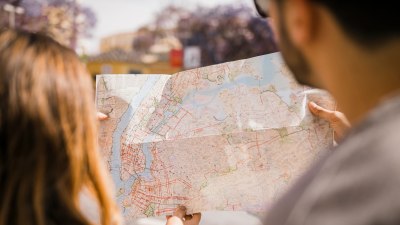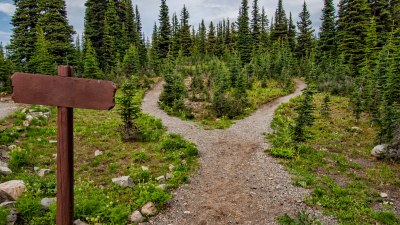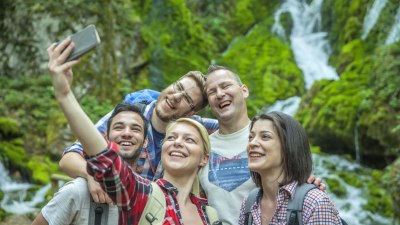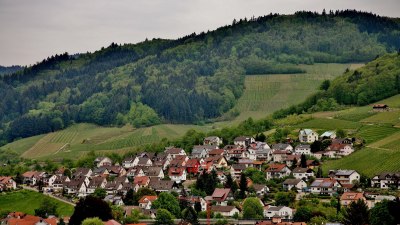You Followed the Map, But the Map Lied
An exploration of the perils of relying on maps and navigating the unknown.

In a world where technology shapes our everyday experiences, maps—both physical and digital—serve as crucial navigational tools. However, the reliance on these maps can lead to unforeseen challenges and misadventures. This article delves into the intriguing concept of navigating based on maps that may not always reflect reality.
The Importance of Navigation
Navigation has been a fundamental aspect of human history, dating back to ancient civilizations. From stars to landscapes, humans have always sought ways to orient themselves in unfamiliar territories. As technology evolved, so did our means of navigation. The invention of the compass and the advent of maps revolutionized travel, allowing people to explore uncharted territories. In modern times, GPS technology has transformed navigation into a daily practice, with many individuals relying solely on digital maps. While these advancements offer numerous benefits, they also pose risks, especially when users blindly trust their devices.
The Dangers of Reliance on Technology
Maps have long been trusted resources, guiding explorers, travelers, and adventurers. However, the over-reliance on technology has created a paradox. Users often assume that the information provided by digital maps is infallible, leading to detrimental consequences when those maps are inaccurate or outdated. Notably, discrepancies between mapped routes and actual conditions can stem from various factors, such as environmental changes, road developments, or software glitches.
When the Map Misleads
There exists countless anecdotes of individuals following maps only to find themselves leading into the wrong path. One famous story involves a family who ventured into the wilderness using a GPS application, only to discover that they were directed onto a closed road. Their adventure quickly turned into a perilous situation, exacerbated by inclement weather and fading daylight. These experiences highlight that maps can, indeed, lie. They may not depict bridges that no longer exist or roads that have fallen into disrepair.
Exploring Historical Maps
Historically, maps have been more than just navigational tools; they reflected the knowledge and beliefs of their creators. Early cartographers would often embellish maps with mythical creatures or exaggerated landscapes, merging fact with fiction. For instance, the famous Piri Reis map from the 16th century showcases parts of North America, yet also includes areas that did not exist in reality, illustrating how perceptions influenced mappings. Such historical inaccuracies remind us that maps are subject to interpretation—just as they can guide, they can also mislead.
The Influence of Terrain and Environment
Human experiences are deeply intertwined with our surroundings. As people navigate different terrains, the condition of roads, weather patterns, and natural obstacles play significant roles in journey outcomes. Some digital mapping systems lack real-time updates about these physical conditions, resulting in travelers following routes that may be impractical or hazardous. For example, a well-known hiking trail may appear as an easy walk on a map, yet hidden steep elevations or slippery surfaces can turn a simple journey into a grueling ordeal.
Real-Life Consequences
Countless narratives demonstrate the potential perils associated with misguided navigation. In recent years, several high-profile cases have emerged, where individuals and groups found themselves in life-threatening situations after following faulty maps. One such case involved a group of tourists navigating through national parks who were led astray by an unreliable mapping service, resulting in hours lost in dense forest areas. These stories reinforce the imperative for travelers to approach navigation with a critical mindset, discerning between faith in technology and common-sense judgment.
Bridging the Gap Between Technology and Awareness
While technology offers incredible advancements, embracing a hybrid approach can enhance our navigation. By blending traditional methods—such as carrying physical maps—with modern technology, travelers can safeguard themselves against unforeseen misdirections. Furthermore, staying attuned to weather forecasts, trail conditions, and frequently seeking local advice can arm adventurers against pitfalls that may arise. Integrating these strategies allows individuals to maneuver past the potential pitfalls of navigation in environments where maps might not be entirely truthful.
Preparing for the Unexpected
No matter how well equipped one might feel, readiness for unpredictability always stands essential. For those venturing into unknown territories, practices like pack essentials for emergencies, maintaining a charged mobile device, and informing someone of your travel plans, can play pivotal roles. Additionally, learning basic survival skills can swing the odds in your favor should a misadventure strike. As captivating as the journey may be, understanding that the world is ever-changing reinforces the idea that maps can deceive.
Encouraging Critical Thinking and Adaptability
One of the critical lessons derived from navigating dynamically shifting landscapes is the importance of critical thinking. Travelers are often quick to dismiss anomalies encountered along mapped routes, believing that they are the exceptions to the rule. Encouraging individuals to assess their environment actively fosters adaptability. People are more equipped to make sound decisions when they can discern whether a mapped direction aligns with their immediate surroundings. This level of awareness extends beyond navigation, reminding us to remain adaptable in all facets of life.
The Role of Community and Shared Experiences
As humans, we naturally gravitate towards community and shared narratives. Engaging in discussions with fellow travelers can yield valuable insights into various routes, potential hazards, and hidden gems that many maps may overlook. Online forums and social media platforms provide spaces for individuals to share their experiences, offering opportunities to learn from others about the potential fallibilities of maps. Gratifyingly, shared experiences create a sense of community, where collective knowledge can propel adventures further than any single map.
Embrace the Journey
In contemplating the notion that 'the map lied,' it's essential to recognize the journey itself, rather than fixating solely on the destination. Embracing the adventure, no matter how unpredictable, enriches our lives immeasurably. While maps remain invaluable resources, they should not be the sole arbiters of our experiences. As we continue to explore the interconnectedness of our world, let us tread cautiously yet courageously, for it's often the uncharted paths that lead to the most memorable adventures.











